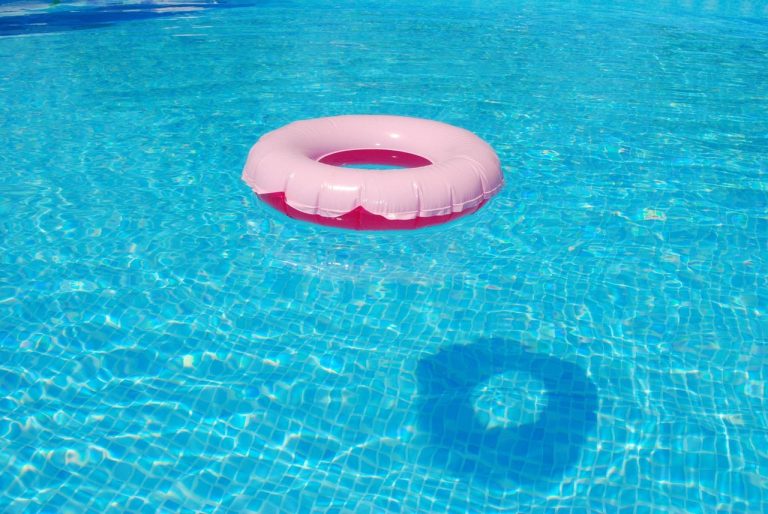Owning a pool is a source of enjoyment and relaxation, and it only takes a few simple habits to keep the water sparkling and inviting. Consistent, small maintenance steps can greatly extend your equipment’s life and preserve water clarity. By sticking to a regular routine, you can prevent the common problems that arise from neglect, …
5 Easy Pool Maintenance Tips Every Owner Should Know

Owning a pool is a source of enjoyment and relaxation, and it only takes a few simple habits to keep the water sparkling and inviting. Consistent, small maintenance steps can greatly extend your equipment’s life and preserve water clarity.
By sticking to a regular routine, you can prevent the common problems that arise from neglect, leaving you with more time to swim and less time dealing with unexpected repairs.
1. Test And Balance Water Regularly
Testing pH and sanitizer levels is a basic habit that pays off each week, and sometimes more often during heavy use. A simple test kit or strips will give a quick read on pH, free chlorine and total alkalinity so you can act with confidence.
Aim to keep pH near the neutral zone that your product manual mentions and hold sanitizer within manufacturer ranges to slow algae and bacterial growth. Treat the readings as a conversation with the water and respond in small steps rather than making big swings.
Total alkalinity and calcium hardness will affect how stable your pH is and whether surfaces begin to scale or corrode. Low alkalinity can let pH wander and high calcium can build deposits on liners and heaters, so balance both for long term health.
When adjustments are needed, add chemicals in measured amounts and let the circulation do its job before retesting. Think of the process as tuning an instrument; small tweaks keep everything in harmony.
2. Skim And Brush Often
Surface debris such as leaves, insects and floating bits can block skimmers and add organic load that uses up sanitizer quickly, so remove them daily when possible. A long handled net helps clear floaters and keeps the pump running smoothly, which saves energy and reduces wear on moving parts.
Brushing pool walls and steps once a week prevents tiny biofilms from developing into visible slimy patches that are harder to treat. Use a brush suited to your surface type to avoid unintended scuffs while doing a thorough job.
Vacuuming the pool floor may feel like extra work but it completes the clean up and reduces the need for additional chemicals. Automatic cleaners are helpful but combine them with manual passes to reach corners and steps where dirt stacks up.
If you see dark spots forming, hopeful cleaning now beats a bigger treatment later that costs extra time and money. Keep a modest routine and the pool will look cared for without becoming a full time chore.
3. Maintain Filtration And Pump Health

A properly running filter and pump are the backbone of clear water and efficient chemical use, so give them attention on a regular schedule. Check pressure gauges and clear skimmer baskets to avoid strain on the motor, and backwash or rinse the filter according to the type of media you own.
Clean filters trap fine particles and prevent cloudy water from becoming a habit that requires harsh interventions. If you suspect deeper mechanical issues or need a professional eye on your system’s performance, scheduling an inspection with PEAK Pool and Spa Inspections can help catch problems before they become costly repairs.
Lubricate o rings and replace worn seals to prevent air from sneaking into the system and creating noisy performance or loss of prime. Keep the area around the equipment free of clutter and weeds, and allow airflow to prevent overheating.
If a part begins to fail the signs are usually subtle, and addressing them early can cut replacement bills and downtime. A little preventive care around the mechanical heart of the pool makes a big difference over months and years.
4. Shock And Sanitize Regularly
Targeted shock treatments restore sanitizer power after heavy use, storms or visible algae blooms, helping to clear up cloudy or green water quickly. Follow label directions for shock products and apply in the evening when sunlight will not burn off active ingredients too fast.
Keep swimmers away until levels drop to a safe range listed on the package, and run the pump to help distribute the treatment evenly across the water. Treating early and decisively prevents minor troubles from snowballing into expensive interventions.
Maintaining a steady sanitizer level day to day reduces the frequency of shocks and keeps the pool pleasant for users. Chlorine is common but alternatives such as bromine or non chlorinated systems each have different rhythms and testing needs to suit various preferences.
When you switch products learn their handling rules, and store chemicals in a dry, ventilated place away from heat. Proper sanitation is both science and careful habit, and small efforts now avoid large tasks later.
5. Monitor Water Level And Seasonal Care
Water level affects pump operation and skimmer performance, so keep it within the recommended band for your system, often around midway up the skimmer opening. Heavy rains and splash out both change levels, so top up or drain a little to keep the system happy and prevent pumps from running dry or losing prime.
Seasonal shifts mean different rhythms for cover use, heater operation and winter or summer opening routines, and a simple checklist will reduce guesswork when weather changes. Adapting to seasonal needs keeps the pool in good shape without panic or long to do lists.
When closing for cooler months take time to winterize properly if you live in a freeze prone area, and when reopening flush lines and inspect equipment to catch issues before water returns. Covers keep out debris but can trap rain and add weight, so manage cover water and clean accumulated leaves to avoid tears and damage.
Store accessories like ladders and floats in a dry spot to prolong their life and stop them from becoming unexpected hazards. A planned seasonal rhythm saves time and money and lets pool owners enjoy high quality water when the season returns.








